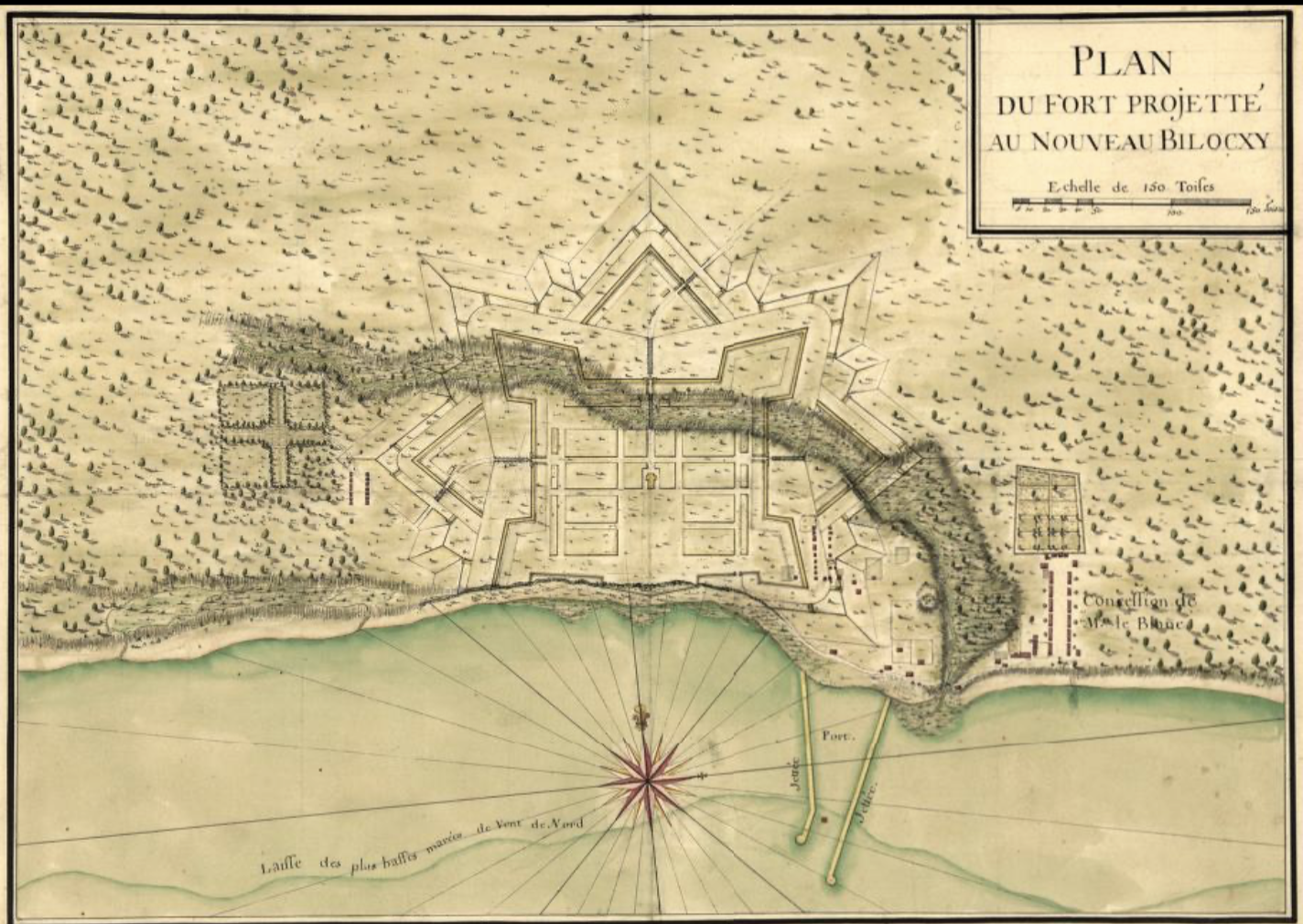French Colonial Period [1699-1763]
French Colonial Period [1699-1763]
1682
Robert Cavelier, Sieur de La Salle (1643-1687) reconnoitered the Mississippi River from the Great Lakes locating its deltaic mouth on the Gulf of Mexico in April 1682. He claimed for France the vast area between the Rocky Mountains and the Alleghenies drained by the Mississippi and all of its tributaries. We know this territory as Louisiana, i.e. belonging to King Louis XIV of France. La Salle called the Great River, Colbert, in honor of the French Minister of Marine.
1699
On February , Pierre Le Moyne Sieur d'Iberville (1661-1706), French Canadian soldier of fortune, anchored his small exploratory fleet at Ship Island. Canadian and French soldiers led by Iberville in the service of King Louis XIV of France, commenced the construction of Fort Maurepas, at present day Ocean Springs, Mississippi, in early April. Fort Maurepas was named to honor the French Minister of the Marine (Navy), Jerome Phelypeaux de Maurepas, Comte (Earl) de Pontchartrain. Several locales in North America bear the name Maurepas or Pontchartrain: Lakes Maurepas and Pontchartrain in southeastern Louisiana and Point Maurepas on the island of Michipicoten (Ontario) in Lake Superior. The Fort Maurepas settlement was also called Biloxi for the local Siouxan Indian tribe which lived on the Pascagoula River.
Iberville and fleet departed Ship Island for France in May. He left a garrison of seventy-six men and ten officers under Sauvolle at Fort Maurepas.
1700
1701
Iberville ordered Fort Maurepas to be abandoned on December 17, 1701.
1702
Fort Maurepas was abandoned in the early months of 1702, as Jean-Baptiste Le Moyne (1680-1768), Sieur de Bienville removed the French garrison to Dauphin Island.
1719
French move Louisiana Colony government to 'Old Biloxi', now Ocean Springs.
1721
French move Louisiana Colony government to 'New Biloxi', now Biloxi.
1722
French move Louisiana Colony government to New Orleans on the Mississippi River.
1763
British Colonial Period [1763-1780]
The Treaty of Paris often called the Peace of Paris, or the Treaty of 1763, was signed on February 10, 1763, by the kingdoms of Great Britain, France and Spain, with Portugal in agreement. Together with the Treaty of Hubertusburg, it ended the French and Indian War or Seven Years' War.[1] The treaties marked the beginning of an extensive period of British dominance outside of Europe.[2] While the bulk of conquered territories were restored to their pre-war owners, the British made some substantial overseas gains at the expense of France and, to a lesser extent, Spain.[3] Preferring to keep Guadaloupe, France gave up New France [Canada] and all of its claims to the territory east of the Mississippi River to Britain. Spain ceded Florida to the British, but later received New Orleans and French Louisiana from France; Manila and Cuba were restored to Spain. France retained Saint Pierre and Miquelon and recovered Guadelupe, Martinique, and Saint Lucia in exchange for Dominica, Grenada, Saint Vincent and the Grenadines, and Tobago going to the British. In India, the French lost out to the British, receiving back its "factories" (trading posts), but agreeing to support the British client governments, as well as returning Sumatra and agreeing not to base troops in Bengal. The British garrison on the Mediterranean island of Minorca was returned to her control, having been captured by the French at the outbreak of hostilities in Europe. Britain returned the slave station on the isle of Gorée to the French, but gained the Senegal River and its settlements. Britain agreed to demolish its fortifications in Honduras, but received permission from Spain to keep a logwood-cutting colony there. Britain confirmed in the treaty the rights of its new subjects to practice the Roman Catholic religion[4] and received confirmation of the continuation of the British king's Hanoverian right as a Prince-elector of the Holy Roman Empire.
- 3558 views